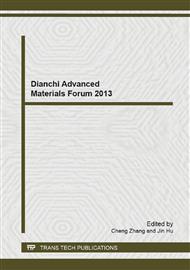p.88
p.93
p.99
p.103
p.107
p.111
p.115
p.120
p.125
Effect of Aluminum Dross on Properties of the Lightweight Mullite Aggregate
Abstract:
The lightweight of refractory is propitious for energy-saving and emission-reduction of the high temperature refractories industry and sustainable development of the refractories resource. This paper researches on properties of the lightweight mullite aggregate which is prepared by two kinds of bauxites and aluminum dross and fired at 1400°C,1450°C,1500°C,1600°C for 1h. The result shows that, (1)The minimum density of grade Ⅰ bauxite is 2.11g/cm3 which is prepared by adding 50wt% aluminum dross and fired at 1600°C; (2)The minimum density of grade Ⅲ bauxite is 1.54g/cm3 which is prepared by adding 50wt% aluminum dross and fired at 1450°C.
Info:
Periodical:
Pages:
107-110
Citation:
Online since:
November 2013
Authors:
Keywords:
Price:
Сopyright:
© 2014 Trans Tech Publications Ltd. All Rights Reserved
Share:
Citation:


